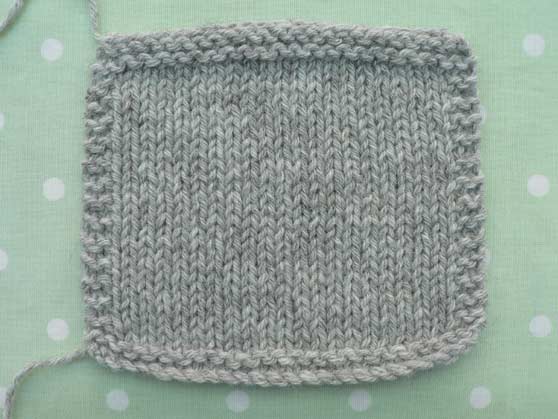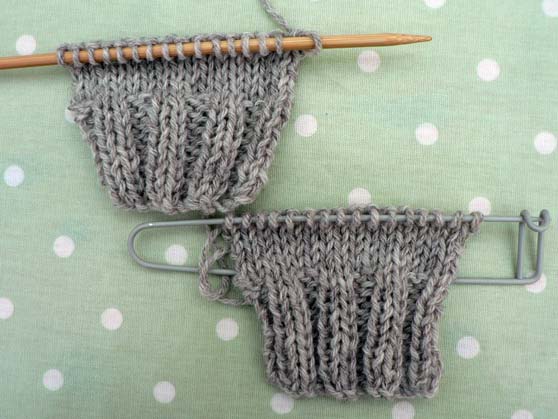
I’d like to knit a chunky jumper to wear in winter with short skirts, tights and boots. I want it to be relatively close-fitting – not a big or boxy jumper – though I will probably be wearing it over a couple of thinner layers. I’m tempted by cable patterns but this is going to be a first attempt at designing a jumper from scratch so I’d better stick with something simple like plain stocking stitch. To draft the knitting pattern, I’m planning to use Sally Melville’s method from her book Knitting Pattern Essentials.
Design inspiration
I’m thinking of a plain, turtle-neck jumper – nothing particularly fancy. These pictures from old TOAST catalogues and the Rowan knitting book ‘A Season’s Tale’ show the kind of jumper I have in mind:
Choosing a yarn – New Lanark chunky
Chunky wool seems like a good choice for the jumper, partly because I’d like a chunky jumper and partly because I am a very impatient person and it will be relatively quick to knit up. This is will also come in handy in case I need to pull it back at all to get the fit right. I’d like the jumper to be pale grey and have developed a mild obsession with knitting it with un-dyed British wool (am not entirely sure where this has come from).
After a little searching I found New Lanark chunky and ordered a ball in ‘limestone’. New Lanark Mills is a heritage mill in Scotland producing wool yarns and textiles, and they reinvest all the proceeds from their sales into the care and development of the New Lanark World Heritage Site. Another plus is the price at £4.75 for 100g. Seeing as this jumper is possibly going to be more of an experiment than a wearable item, I don’t really want to buy super-expensive yarn.
Swatching
The recommended gauge for the New Lanark chunky yarn is 14 stitches and 18 rows to 10cm with 6mm needles. To make my swatch, I followed Deborah Robson’s method from her free Craftsy mini-course Know your Wool. First, I knit a largish square in stocking stitch, starting and ending each row with 2 knit stitches and knitting the first and last few rows in garter stitch as well. Secondly I washed the swatch in warm water (with a little wool wash liquid added) then rinsed it in cold water. I squeezed the sample in a towel, placed it flat and left it to dry. When wet, the swatch smelled very sheepy – but in a nice way!
This is the swatch before washing:
This is the swatch after washing and drying:
The yarn knits up to a really nice fabric – it’s exactly the kind of thing I was looking for. I think that the tension is about right on 6mm needles – not too tight or too loose. There was quite a big change in gauge before and after washing so I’ll need to take that into account when drafting the knitting pattern. Before washing, the gauge was 14 stitches and 17 rows to 10cm. After washing it’s 12.5 stitches and 19 rows to 10cm so quite a difference.
There is also another possible problem. The reason the yarn has the variation in colour that I really like is that it contains a proportion of coarser, darker fibres. They’re not very coarse but they are slightly scratchy – probably too scratchy to wear next to the skin. This is mostly OK because the jumper will be worn over other layers but I was thinking of making a turtleneck so I don’t want the wool rubbing against my chin. Hmmm… my options are to either (1) find another yarn, or (2) modify the design.
Other yarns?
I looked at a few other chunky yarns. I liked the look of Malabrigo chunky but, as a Merino, it’s a totally different kind of yarn and I think would suit a different kind of jumper (with cables perhaps). It’s also a fair bit more expensive than the New Lanark. Another possibility might be Drops Cloud but that’s a completely different kind of yarn again – it’s a “blow yarn” made from a mix of alpaca, wool and polyamide and looks very soft, light and fluffy. Again, it’s more expensive and I’m not sure it will wear very well.
I already had some Drops Alaska, so I knit a swatch to see whether that might be an option. It’s an Aran weight yarn rather than chunky but that might be OK.
I don’t think that the Drops Alaska is really what I want for the jumper. I like the look of the un-dyed yarn so will stick with it. So moving on to option 2 of fiddling with the design…
Tweaking the design
If I stick with the New Lanark chunky yarn, then I could perhaps make the turtleneck a little shorter and wider so that it’s not tucked under my chin. A little like these jumpers from TOAST:
This means that my final (and very basic) design looks something like this:
Measurements and garment dimensions
So I’ve decided on the style, yarn and colour but one rather important decision I’ve not tackled yet is how big to make the jumper. I took my own measurements and also measured a few jumpers that I already own to get a feel for how big to make this one.
I’m 160cm tall and, after comparing other jumpers, a length of 54cm seems about right for this style. The chest circumference will be 92cm. This is my chest measurement of 87cm plus 5cm total ease across the back and front. I’m hoping that 5cm ease will be enough to make the jumper comfortable to wear over a couple of thin layers but still look fitted – we’ll see!
Quantity of yarn required
To work out how much more yarn to buy, I’ve done some slightly dodgy calculations. The swatch weighs 20g and has an area of about 300cm². This means that a 100g ball with knit up 1500cm².
I estimate that the front is about 2500cm² and the back is the same. Each sleeve will be approximately 1300cm². So the total area for the main pattern pieces of the jumper is 7600cm² which is roughly 5 balls of wool. Seeing as I’m planning to add a turtle-neck and I may make the ribbing bands quite deep, I’ll probably buy 6 balls to be on the safe side. I also have the rest of the swatch ball as back up.
Needle size
Most of the knitting can be done on 6mm needles. I’m dithering over whether to knit the rib (which will be P2K2) on a smaller size of needles or not. I don’t really like the look of tight rib bands but the general advice seems to be to drop down a needle size as it makes it the rib stitches tidier and the transition to stocking stitch neater. I tried a couple of test pieces – one with 6mm needles for both rib and stocking stitch (top left in image), and one with 5.5mm needles for the rib then changing to 6mm needles for the stocking stitch (bottom right in image).
To be honest, I struggle to tell the difference between them so perhaps it doesn’t matter all that much. On balance I think I prefer the sample with the ribbing knitted on 5.5mm needles so will go with that.
Drafting the knitting pattern
Now that most of the design decisions are made, the next step is to spend some time working through Sally Melville’s book Knitting Pattern Essentials to put together the pattern. I fear that my attention is currently being diverted and I may not make much progress with this for a while. It doesn’t look all that hopeful that this jumper is going to be finished in time for winter but you never know!
















{ 1 comment… read it below or add one }
I like knitting and not sure where to get machines in the technolgy era manual knitting is no more an option hence a need for the machines.